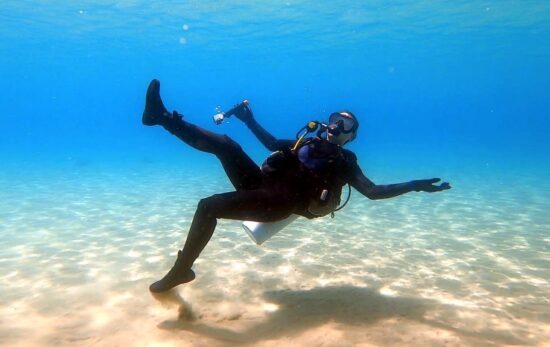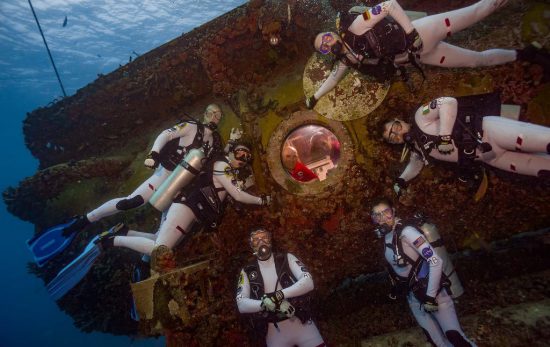You’ve likely read that humans know more about the surface of the moon than we do about the bottom of the ocean. What you may not know is: as a certified diver, you have a lot in common with astronauts.
Featured image photo credit: NASA
1. Astronauts Explore in Pairs and Do Buddy Checks
Every time you do a buddy check, you’re doing the same thing astronauts do before every spacewalk. Whether you’re exploring underwater or in outer space, it’s important to confirm all your life support systems are working properly and always bring a buddy.
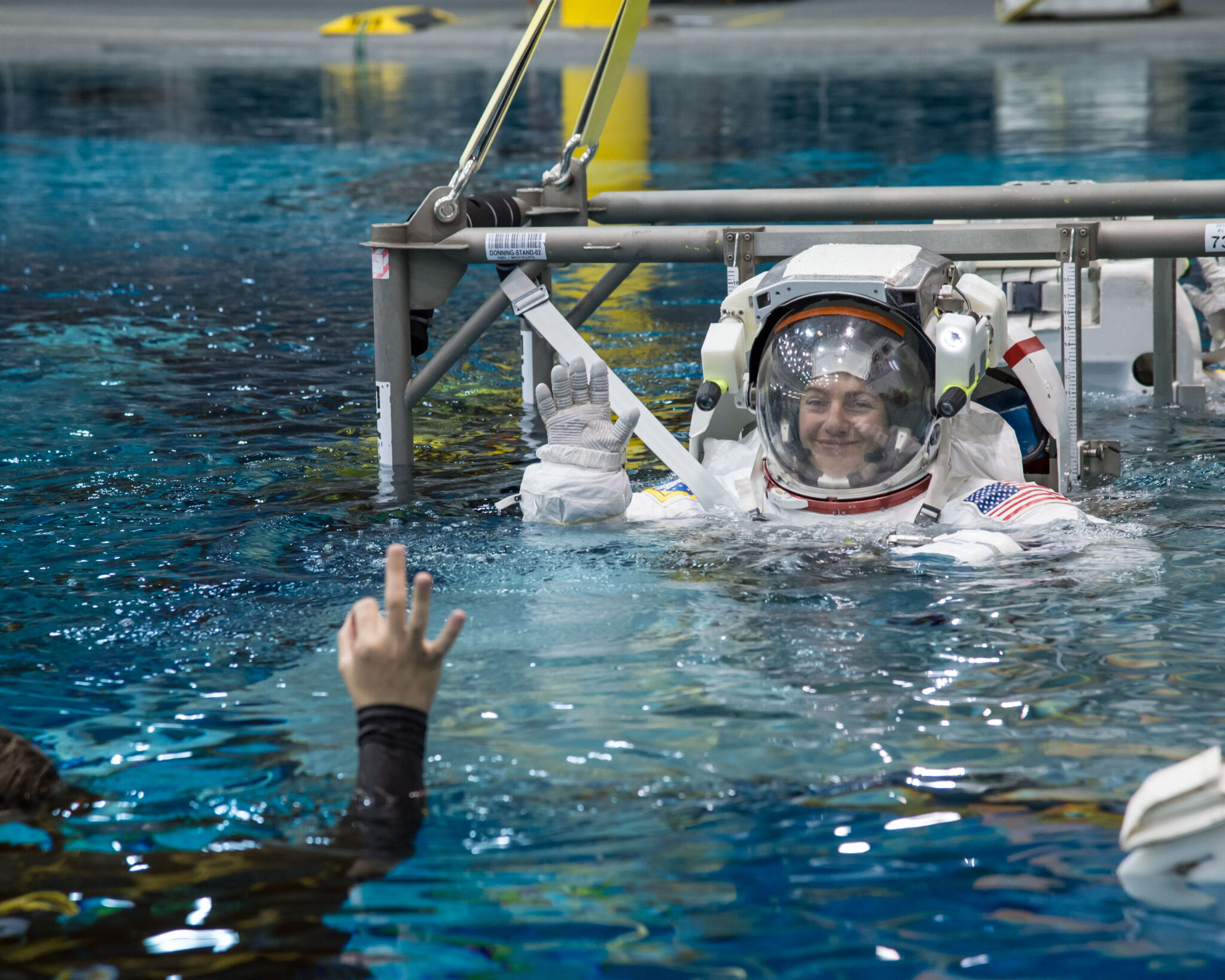
2. We Perfect Our Skills in a Pool
Both astronauts and divers practice essential skills in a pool before heading to open water/outer space. Water is the closest thing we have to microgravity here on earth, so that’s why NASA built a massive indoor pool called the Neutral Buoyancy Lab (NBL). The 12 metre/40 foot-deep, 23.5 litre/6.2 million-gallon pool contains a full-size replica of the International Space Station (ISS).
Sidenote: it’s (apparently) possible to rent the NBL. Who wants to go in with me for the BEST birthday party ever?
In Episode 6 of PADI’s Dive Stories Podcast, Dr. Jessica Meir talks about the similarities and differences between scuba diving and spacewalks. You can listen to her in depth interview below, or in Apple Podcasts, Google Podcasts, or Spotify.
3. Hawai’i and Florida are Popular Training Destinations
Florida has it all: wrecks, reefs, manatees, and an underwater space base. At the Aquarius Laboratory 20 metres/65 feet below the surface, ESA and NASA astronauts spent 16 days underwater in an “analog” mission to Mars.
The Big Island of Hawai’i, home to the world-famous manta ray night dive, is also where NASA conducts simulated missions to Mars and the Moon. Learn more about the Hawai’i Space Exploration Analog and Simulation (HI-SEAS) habitat.
4. #Astronautproblems are Also #Diverproblems
Have you ever tried to itch your eye underwater and experienced a disappointing “toink” when you remember, “oh yeah, I’m wearing a mask.” You’ll find many relatable moments like these in astronaut Chris Hadfield’s book about life on the International Space Station.
5. All the Gear
Our bodies weren’t designed for underwater or outer space environments, that’s why both divers and astronauts need an air space (helmet or mask) to see and an air supply. Divers who explore at extreme depths, like Dr. Sylvia Earle, wear suits that look similar to what astronauts wear on spacewalks.
6. “Alien” Life
The ocean is home to countless “alien” life forms including:
- Creatures that don’t need oxygen to survive
- Glow-in-the-dark sharks
- See-through fish without red blood cells
- Plants that don’t photosynthesize
7. Our Oceans Are Already Home To Strange Objects From Space
In a remote part of the Pacific, there is a pile of space junk. When something falls out of the sky, space scientists need a big target to hit, one that’s far from civilization.
Point Nemo is located between the Pitcairn Islands, Easter Islands and Antarctica. It’s 2575 km/1600 miles from the nearest landmass, which means astronauts on the ISS are actually closer to earth than any of us are to our planet’s space graveyard.
The site is estimated to be 4000 metres/13,100 feet deep, but if you could dive there, you’d find:
- A SpaceX rocket
- The MIR space station
- 6 Russian Salyut space stations
- ESA cargo ships
- Japanese cargo craft
… and possibly the lair of Cthulhu
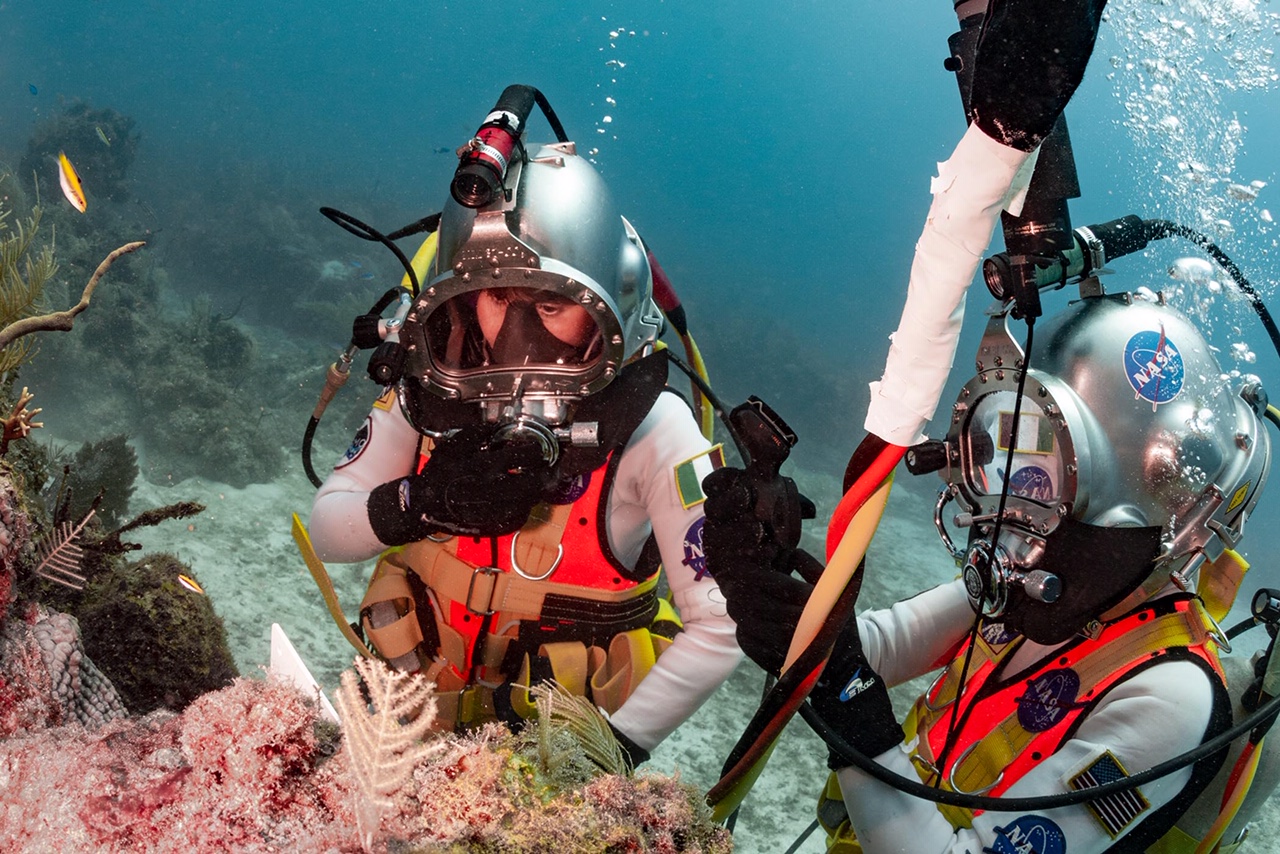
Get Astronautical
If you’ve always dreamed of visiting outer space, but don’t have $55 million US to book a trip to the ISS, a scuba diving certification is an excellent alternative. Enroll in the PADI® Open Water Diver course or try a Discover Scuba® Diving® Experience.
If you’re already a certified diver, set a course for the U.S. Space and Rocket Center where you can dive in their 7 metre/24 foot-deep astronaut training tank. Or, apply to work as a diver at NASA’s NBL.
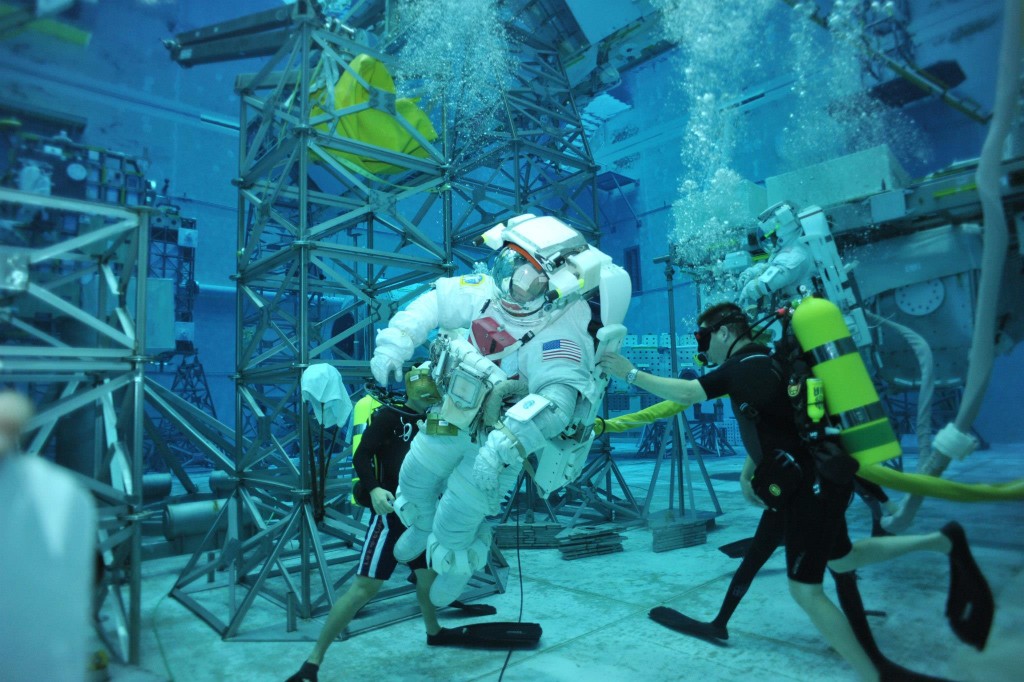
Further Reading
Could Humans Ever Live Underwater?
Astrology for Scuba Divers
NASA’s NEEMO Project



